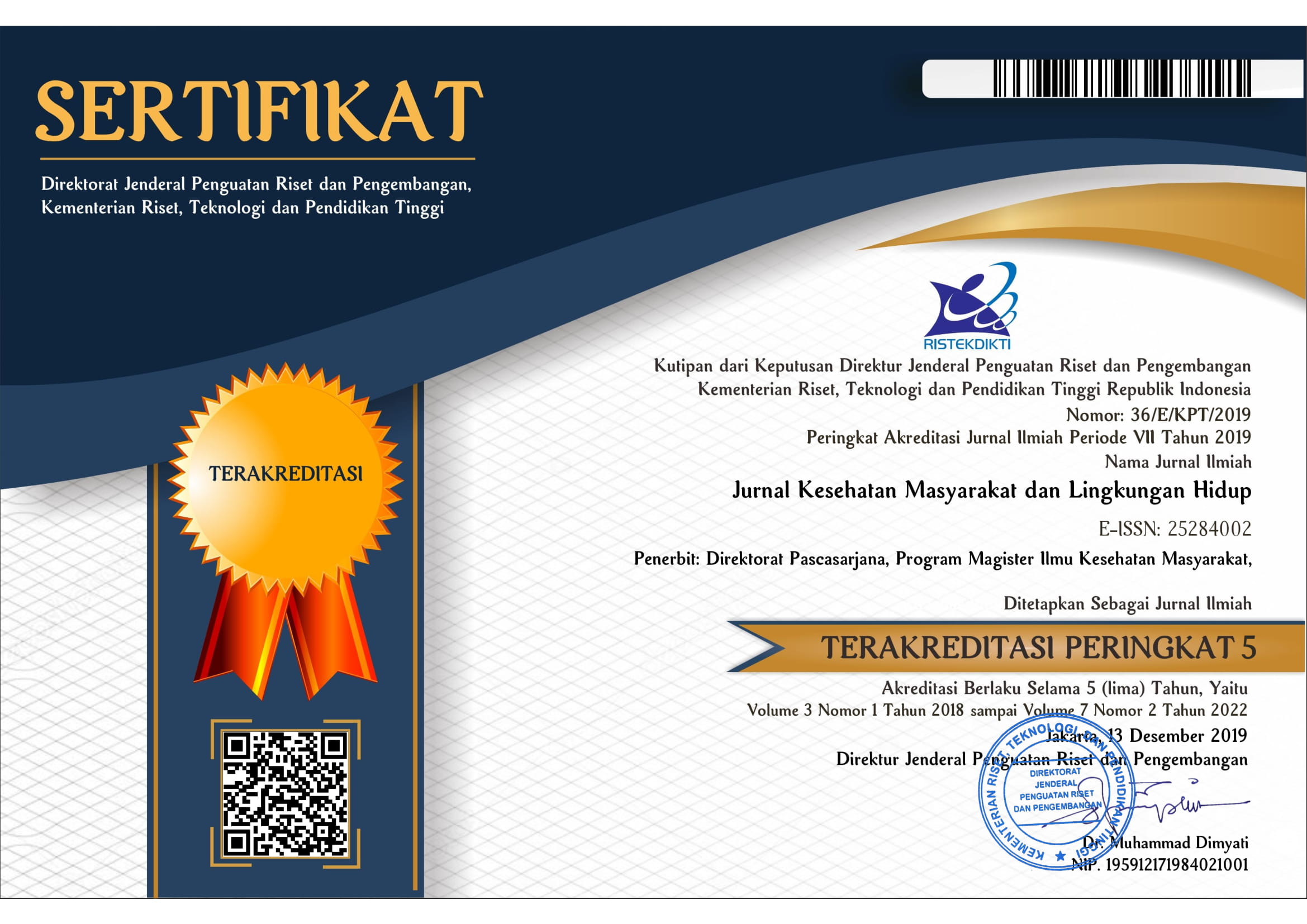ANALISIS PENGELOLAAN LINGKUNGAN HIDUP AKIBAT DAMPAK AKTIVITAS SPBU TERHADAP PENURUNAN KUALITAS AIR
Keywords:
Gas Station, Nitrate (NO3-N), Nitrite (NO2-N), Lead (Pb), Chromium ValenceAbstract
SPBU (Public Fuel Filling Station) is a refueling place for motor vehicles, the presence of these gas stations has positive and negative impacts on the surrounding community, one example of positive impacts is the presence of gas stations in the community makes it easy for them to get fuel and the price is also cheaper than the oil stalls on the streets while the negative impact of the presence of gas stations in the middle of the community have a negative impact on the environment while it can also cause a decrease in surface water quality. aims to see the impact of gas station activities on surface water quality pollution, the parameters in this study are Color, Dissolved Solids (TDS), Phosphate (PO4 -P), Nitrates (NO3-N), Nitrites (NO2-N), Lead (Pb) , Chromium Valence VI (Cr), Oils / Fats, Hardness (CaCO3), Chloride (Cl), pH, Ammonia (NH3-N), Sulfides, Sulfates (SO4), Organic Substances (KMnO4) and other paternity which are considered important in give effect to water quality. The location of the observation is at the gas station on the monitoring well and Oil Catcher Outlet in West Sumatra. In the results of the study there are several parameters that are above the quality standard so management needs to be carried out as (1). Oil spills or splashes must be cleaned immediately with absorbent materials such as sand or sorbent, especially when dismantling and refueling fuel. Then the oil impurities must be disposed of in a special landfill such as a sandbox for sorbents used for spills / oil spills that have been provided. (2). Monitoring wells must be inspected visually every day, to detect any leakage or seepage of oil into the ground. Then a periodic check of groundwater quality is carried out at the gas station location to the Laboratory, (3). Bathroom waste such as urine and feces must be channeled into the waterproof system septic tank and desludging regularly every year, (4). Maximize oil catcher performance by always cleaning oil catchers from rubbish heaps.
Downloads
References
Kennedy, K., Kusuma, P. D., & Setianingsih, C. (2019). Prediksi Pola Pencemaran Air Sungai Menggunakan Simple Neural Network. eProceedings of Engineering, 6(1).
Latupeirissa, A. N., & Manuhutu, J. B. (2020). Analisis parameter fisika dan kesadahan air pdam wainitu ambon. Molluca journal of chemistry education (mjoce), 10(1), 1-7.
Martono, N. (2010). Metode penelitian kuantitatif: Analisis Isi dan Analisis Data Sekunder (sampel halaman gratis). RajaGrafindo Persada.
Pradana, H. A., Wahyuningsih, S., Novita, E., Humayro, A., & Purnomo, B. H. (2019). Identifikasi Kualitas Air dan Beban Pencemaran Sungai Bedadung di Intake Instalasi Pengolahan Air PDAM Kabupaten Jember. Jurnal Kesehatan Lingkungan Indonesia, 18(2), 135-143.
Risdiyanta, R. (2014). Membedah Stasiun Pengisian Bahan Bakar Umum (SPBU) Di Indonesia. Swara Patra, 4(3).
SURYONO, G. D. P., Julinar, J., & Purwaningrum, W. (2019). Penggunaan bakteri pseudomonas knackmussii untuk dekolorisasi zat warna congo red dan limbah cair industri tekstil (doctoral dissertation, sriwijaya university).
Warlina, L. (2004). Pencemaran air: sumber, dampak dan penanggulangannya. Unpublised). Institut Pertanian Bogor.
Yusniartanti, N. (2019). Removal besi, mangan, dan zat organik dalam air tanah dengan multiple tray aerator menggunakan media arang dan batu kerikil.














